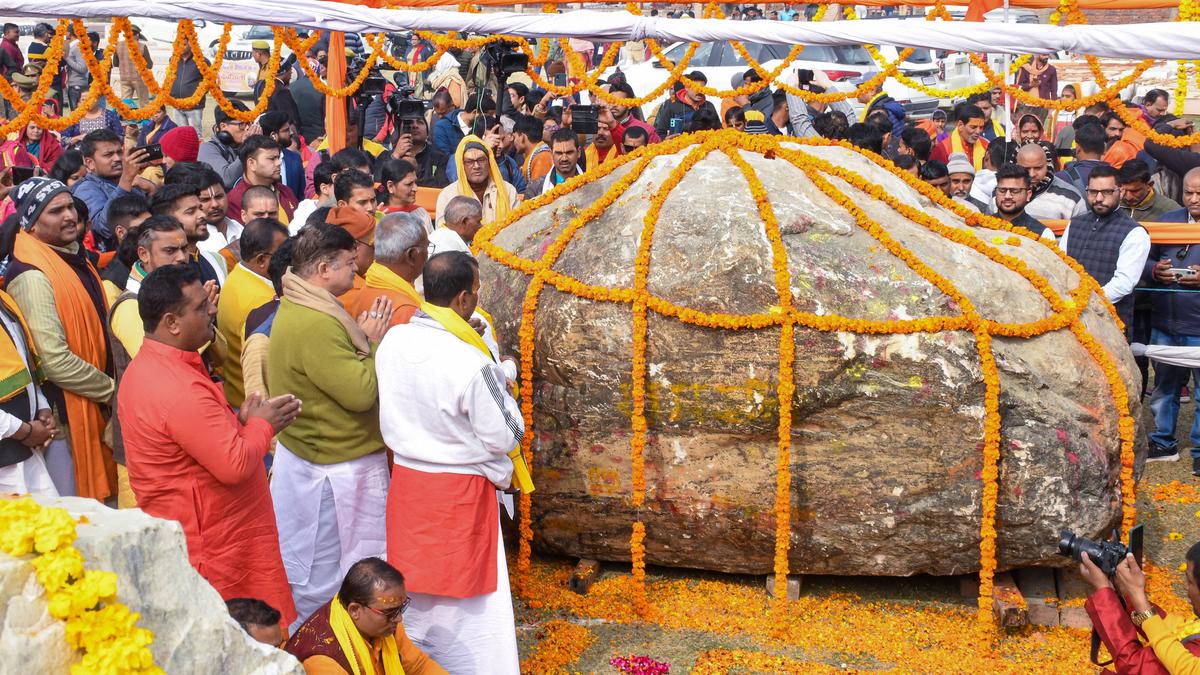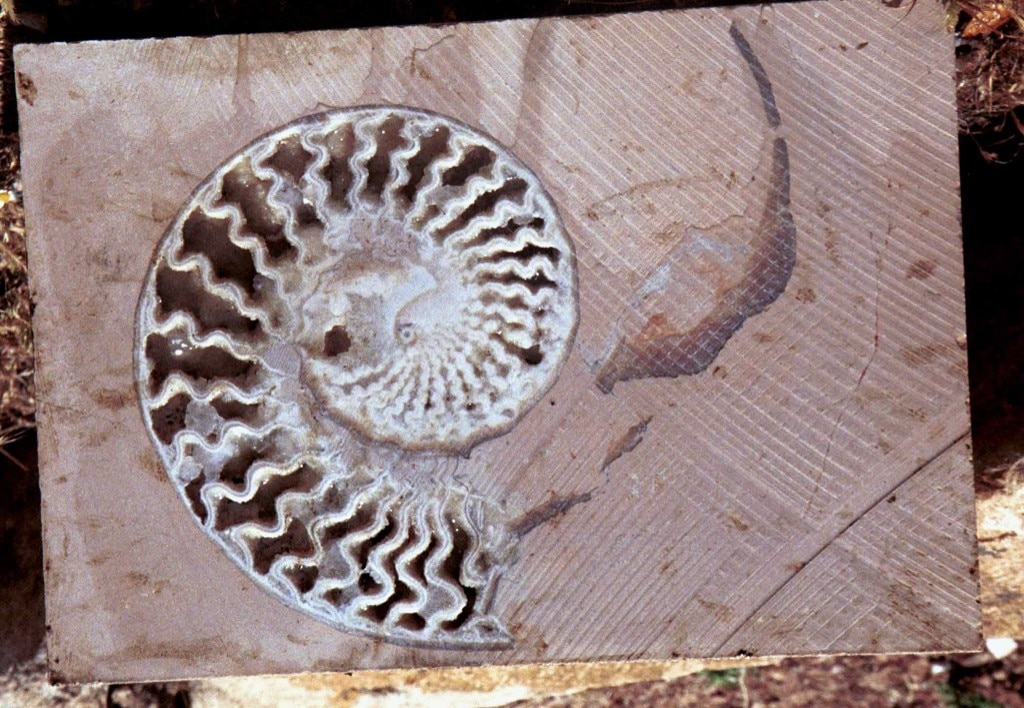Welcome to DU!
The truly grassroots left-of-center political community where regular people, not algorithms, drive the discussions and set the standards.
Join the community:
Create a free account
Support DU (and get rid of ads!):
Become a Star Member
Latest Breaking News
Editorials & Other Articles
General Discussion
The DU Lounge
All Forums
Issue Forums
Culture Forums
Alliance Forums
Region Forums
Support Forums
Help & Search
Anthropology
Related: About this forumShaligrams, the sacred fossils that have been worshipped by Hindus and Buddhists for over 2,000 year
Shaligrams, the sacred fossils that have been worshipped by Hindus and Buddhists for over 2,000 years, are becoming rarer because of climate changeA Shaligram on top of a bed of small rocks. Holly Walters, CC BY-SA
Published: August 4, 2023 8.27am EDT
For more than 2,000 years, Hinduism, Buddhism and the shamanic Himalayan religion of Bon have venerated Shaligrams – ancient fossils of ammonites, a class of extinct sea creatures related to modern squids.
Originating from a single remote region in northern Nepal – the Kali Gandaki River Valley of Mustang – Shaligram stones are viewed primarily as manifestations of the Hindu god Vishnu. Because they are not human-made, but created by the landscape, they are believed to have an intrinsic consciousness of their own. As a result, Shaligrams are kept in homes and in temples, where they are treated as both living gods and active community members.
I went on my first Shaligram pilgrimage in 2015. After arriving at the village of Jomsom in Mustang, I, along with a group of Indian and Nepali pilgrims, started the five-day trek northeast from there to the temple of Muktinath, where the journey culminates.
Making our way through the winding river passage, between 26,000-foot (8,000-meter) mountain peaks, we carefully looked for Shaligrams in the fast-moving water and gathered up any we could reach.
More:
https://theconversation.com/shaligrams-the-sacred-fossils-that-have-been-worshipped-by-hindus-and-buddhists-for-over-2-000-years-are-becoming-rarer-because-of-climate-change-209311

~ ~ ~

What Is Shaligram? Stones That Covered 500-Km Journey From Nepal To Ayodhya For Lord Ram Idol
Two massive shaligrams were brought to Ayodhya from Nepal to sculpt Lord Ram's statue. Here's all you need to know about the rare rock.
By: ABP News Bureau | Updated at : 03 Feb 2023 10:35 AM (IST)
Special rocks, known as Shaligrams, were brought to Ayodhya Ram Temple site from Nepal on Thursday. The Shaligrams are rare rocks, from which idols of Lord Ram and Sita will be carved out and placed in the sanctum sanctorum. The rocks were presented to the Shri Ram Janambhoomi Teerth Kshetra Trust after special prayers. They were brought from the Mustang district of Nepal, covering nearly 500 kilometres over eight days.
These rocks, that are 60 million years old, reached Ayodhya from Nepal on two different trucks. One rock weighs 26 tonnes and the other weighs 14 tonnes.
So, what is this Shaligram and what is its significance? Here's all that we know about these rare stones.
What is a Shaligram?
Shaligrams are stones created from the fossilised shells of ancient sea creatures. They are primarily formed from fossilized ammonite, a mollusk that lived millions of years ago. They are considered to be a sacred object in Hinduism
What does shaligram look like?
Shaligram is black or dark brown in colour and are found in various shapes and sizes, each with its own unique markings that are considered to represent different aspects of Lord Vishnu.

Fossil shell of an ammonite, an extinct cephalopod mollusk from the Cretaceous period (AFP).
More:
https://news.abplive.com/news/india/shaligram-nepal-to-ayodhya-lord-ram-idol-all-about-the-rare-stone-1579738
InfoView thread info, including edit history
TrashPut this thread in your Trash Can (My DU » Trash Can)
BookmarkAdd this thread to your Bookmarks (My DU » Bookmarks)
1 replies, 1771 views
ShareGet links to this post and/or share on social media
AlertAlert this post for a rule violation
PowersThere are no powers you can use on this post
EditCannot edit other people's posts
ReplyReply to this post
EditCannot edit other people's posts
Rec (16)
ReplyReply to this post
1 replies
 = new reply since forum marked as read
Highlight:
NoneDon't highlight anything
5 newestHighlight 5 most recent replies
= new reply since forum marked as read
Highlight:
NoneDon't highlight anything
5 newestHighlight 5 most recent replies
Shaligrams, the sacred fossils that have been worshipped by Hindus and Buddhists for over 2,000 year (Original Post)
Judi Lynn
Aug 2023
OP
wnylib
(24,374 posts)1. The name sounds like a message sent via shells.
The ancient version of instagram, except not so instant.